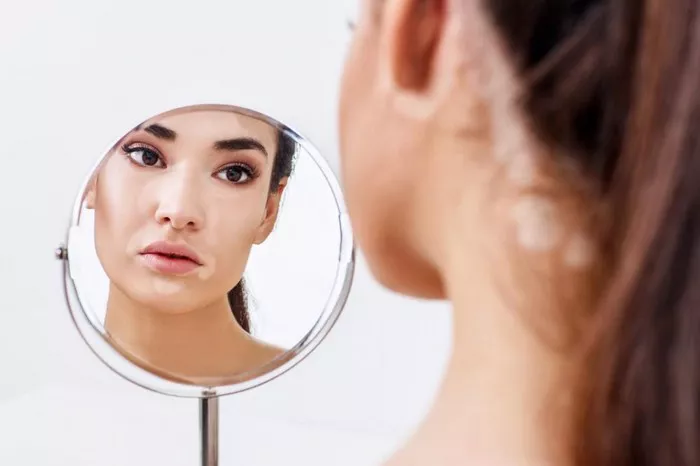Vitiligo, a skin condition characterized by the loss of pigment, can make those affected particularly sensitive to sunlight. As such, finding the right sunscreen is crucial for managing the condition and safeguarding the skin from harmful UV rays. In this article, we delve into the world of sunscreens tailored for vitiligo, exploring their efficacy, affordability, and capacity to protect against sun-induced damage.
Understanding Vitiligo and Sun Exposure
Vitiligo is a chronic skin disorder that results in the loss of melanocytes, the cells responsible for producing skin pigment. This loss of pigment leaves patches of skin lighter in color, often creating noticeable contrasts against the surrounding areas. While the exact cause of vitiligo remains unknown, it is widely believed to be an autoimmune condition that may be triggered or exacerbated by various factors, including sun exposure.
Sunlight contains ultraviolet (UV) radiation, which can penetrate the skin and damage melanocytes. In individuals with vitiligo, this damage can further compromise the already diminished pigment-producing cells, leading to increased depigmentation and potentially exacerbating the condition. Therefore, adequate sun protection is essential for individuals with vitiligo to minimize the risk of further pigment loss and to maintain overall skin health.
Choosing the Right Sunscreen
When selecting a sunscreen for vitiligo-prone skin, several factors should be considered:
1. Broad-spectrum Protection:
Opt for a sunscreen that offers broad-spectrum protection, meaning it shields the skin from both UVA and UVB rays. UVA rays penetrate deep into the skin and can trigger pigment loss and skin aging, while UVB rays primarily cause sunburn.
2. High SPF:
Look for a sunscreen with a high Sun Protection Factor (SPF) to ensure adequate protection against UVB rays. Dermatologists generally recommend using a sunscreen with an SPF of 30 or higher for daily use.
3. Physical vs. Chemical Sunscreens:
Physical sunscreens contain mineral ingredients like zinc oxide or titanium dioxide, which act as a physical barrier to deflect UV radiation away from the skin. Chemical sunscreens, on the other hand, absorb UV rays and convert them into heat. Individuals with sensitive skin or vitiligo may prefer physical sunscreens, as they are less likely to cause irritation or trigger allergic reactions.
4. Water Resistance:
If you’ll be engaging in water activities or perspiring heavily, opt for a water-resistant sunscreen to ensure prolonged protection.
5. Non-Comedogenic Formulation:
Choose a sunscreen labeled as non-comedogenic, meaning it won’t clog pores, to prevent potential breakouts, especially if you have oily or acne-prone skin.
6. Hypoallergenic and Fragrance-free:
To minimize the risk of irritation or allergic reactions, consider sunscreen formulations that are hypoallergenic and free from added fragrances and dyes.
Top Sunscreens for Vitiligo
Several sunscreens on the market cater specifically to individuals with sensitive or depigmented skin. Here are some top recommendations, considering their efficacy, price, and capacity:
1. EltaMD UV Clear Broad-Spectrum SPF 46:
This dermatologist-recommended sunscreen offers broad-spectrum protection with an SPF of 46. Formulated with zinc oxide and octinoxate, it provides long-lasting protection against UVA and UVB rays while also containing niacinamide to calm and soothe sensitive skin. The lightweight, oil-free formula is suitable for all skin types, including acne-prone and rosacea-prone skin.
Price: Approximately $36 for a 1.7 oz (48g) tube
Capacity: Typically lasts 1-2 months with daily use
2. La Roche-Posay Anthelios Melt-in Milk Sunscreen SPF 60:
This high-protection sunscreen from La Roche-Posay features a fast-absorbing, non-greasy texture that melts into the skin without leaving a white cast. With an SPF of 60 and a combination of chemical and mineral filters, it provides effective broad-spectrum protection against UV radiation. The fragrance-free, paraben-free, and oxybenzone-free formula is suitable for sensitive skin, including those with vitiligo.
Price: Around $35 for a 3 fl oz (88ml) bottle
Capacity: Sufficient for approximately 1-2 months of daily use
3. CeraVe Hydrating Mineral Sunscreen SPF 30:
Ideal for sensitive and dry skin, this mineral sunscreen from CeraVe features a hydrating formula enriched with ceramides, niacinamide, and hyaluronic acid. With an SPF of 30 and 100% mineral UV filters (zinc oxide and titanium dioxide), it provides gentle yet effective protection against UV rays without causing irritation or clogging pores. The non-comedogenic and fragrance-free formula is suitable for daily use on both face and body.
Price: Approximately $15 for a 3 oz (85g) tube
Capacity: Lasts approximately 1-2 months with daily application
4. Aveeno Positively Mineral Sensitive Skin Sunscreen SPF 50:
Developed specifically for sensitive skin, this mineral sunscreen from Aveeno features a gentle, non-irritating formula enriched with naturally-sourced 100% zinc oxide. With an SPF of 50, it provides effective broad-spectrum protection against UVA and UVB rays while being free from fragrance, parabens, and phthalates. The lightweight, fast-absorbing texture makes it suitable for daily use on the face and body.
Price: Around $10 for a 3 oz (85g) tube
Capacity: Typically lasts 1-2 months with regular use
Conclusion
When it comes to managing vitiligo, sun protection is paramount. By choosing the right sunscreen and incorporating it into your daily skincare routine, you can minimize the risk of sun-induced damage and help preserve skin health. Whether you opt for a dermatologist-recommended brand or a drugstore favorite, prioritize broad-spectrum protection, high SPF, and skin-friendly formulations to keep your skin safe and healthy. Remember to apply sunscreen generously and reapply every two hours, especially when spending extended periods outdoors. With the right sunscreen and proper sun protection habits, you can enjoy the outdoors with confidence while safeguarding your skin against the harmful effects of UV radiation.


























